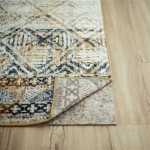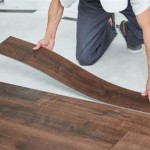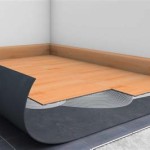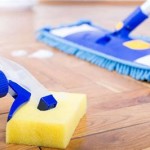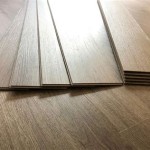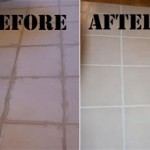How To Remove Carpet Glue From Hardwood Floors
Removing carpet glue from hardwood floors is a challenging but often necessary task when transitioning from carpet to a more durable and visually appealing flooring option. Carpet glue, particularly older varieties, can be stubbornly adhered to the wood, requiring patience, the right tools, and appropriate techniques to avoid damaging the underlying floor. This article provides a comprehensive guide to effectively removing carpet glue from hardwood floors, focusing on various methods and precautions to ensure a successful outcome.
The difficulty of removing carpet glue stems from its formulation. Adhesives used to secure carpets are designed to create a strong, permanent bond. Over time, the glue can harden and become increasingly resistant to removal efforts. Furthermore, different types of glue react differently to solvents and heat, making it essential to identify the type of adhesive used, if possible. Knowing the glue type will inform the most effective removal strategy. Factors such as the age of the glue, the type of hardwood, and the application method also influence the removal process.
Before commencing any removal process, thorough preparation is critical. This includes gathering the necessary tools and materials, protecting the surrounding areas, and understanding the potential risks involved. Rushing the process or using inappropriate techniques can lead to damaged hardwood, requiring costly repairs or even floor replacement. Prior planning and careful execution are key to minimizing the risk of damage.
Key Point 1: Preparation and Safety Measures
The initial stage of removing carpet glue from hardwood floors involves meticulous preparation. This includes identifying the type of adhesive, gathering the necessary tools and materials, and implementing safety precautions. Correctly identifying the type of glue is vital as it dictates the optimal removal method. Water-based adhesives, for example, may respond well to heat and moisture, while solvent-based adhesives often require chemical solvents. If the glue type is unknown, a small, inconspicuous test area should be used to assess the effectiveness of different removal methods.
The following tools and materials are commonly required for carpet glue removal: plastic scraper, putty knife, heat gun or hair dryer, mineral spirits or adhesive remover specifically designed for hardwood floors, safety glasses, gloves, ventilation equipment (fans or open windows), clean cloths or rags, and a vacuum cleaner. Depending on the severity of the glue residue, additional tools such as a floor scraper with a razor blade or a specialized adhesive removal machine may be required.
Safety is paramount when handling adhesives and solvents. Always wear safety glasses to protect the eyes from splashes or debris. Gloves are essential for protecting the skin from irritation and chemical exposure. Adequate ventilation is crucial to prevent the inhalation of harmful fumes. Open windows and use fans to ensure a constant flow of fresh air. If using strong solvents, consider wearing a respirator mask for additional protection. Before using any chemical solvent, carefully read and follow the manufacturer's instructions and safety guidelines.
Protecting the surrounding areas is also crucial. Cover any furniture or fixtures near the work area with plastic sheeting to prevent contamination by glue or solvents. Tape down the edges of the plastic sheeting to secure it in place. If the work area is adjacent to carpeted areas, consider using painter's tape to create a barrier and prevent the spread of debris. Consider covering the surrounding walls with plastic as well to prevent any splatter from damaging the paint.
Key Point 2: Methods for Carpet Glue Removal
Several methods can be employed to remove carpet glue from hardwood floors, each with its advantages and disadvantages. The choice of method depends on the type of glue, the extent of the residue, and the user's comfort level with different tools and techniques. The most common methods include heat application, solvent application, and mechanical scraping.
Heat Application: Heat can soften many types of carpet glue, making it easier to scrape away. A heat gun or hair dryer can be used to apply heat to the glue residue. Hold the heat source a few inches away from the floor and move it slowly back and forth to avoid overheating the wood. Once the glue has softened (it should become pliable and slightly sticky), use a plastic scraper or putty knife to gently lift the glue from the floor. Avoid using metal scrapers, as they can scratch or gouge the hardwood. Work in small sections and reheat as needed. This method is particularly effective for water-based adhesives and is often preferred for its relatively low risk of damaging the wood.
Solvent Application: Chemical solvents can dissolve carpet glue, making it easier to remove. Mineral spirits, acetone, and adhesive removers specifically designed for hardwood floors are commonly used. Before applying any solvent, test it on a small, inconspicuous area of the floor to ensure it does not damage the finish or discolor the wood. Apply the solvent generously to the glue residue, allowing it to soak for several minutes to soften the adhesive. Follow the manufacturer's instructions for specific soaking times. Use a plastic scraper or putty knife to gently lift the softened glue from the floor. Wipe the area clean with a damp cloth to remove any remaining solvent residue. Repeat the process as necessary. Ventilation is extremely important when employing the solvent method.
Mechanical Scraping: Mechanical scraping involves using a floor scraper or a specialized adhesive removal machine to physically remove the glue from the floor. This method is generally reserved for more stubborn glue residues that do not respond well to heat or solvents. A floor scraper with a razor blade can be used to carefully scrape away the glue. Hold the blade at a low angle to the floor and apply even pressure to avoid gouging the wood. Work in small sections and be patient. Specialized adhesive removal machines are equipped with rotating brushes or pads that can effectively remove glue without damaging the floor. These machines are more expensive to rent or purchase but can save significant time and effort for large areas. When using any mechanical scraping method, exercise caution to prevent scratching or damaging the hardwood surface.
Key Point 3: Post-Removal Procedures and Finishing Touches
Once the carpet glue has been removed, it is essential to thoroughly clean the hardwood floor to remove any remaining residue and prepare it for refinishing or sealing. This involves several steps, including vacuuming, cleaning with a hardwood floor cleaner, and inspecting for any damage that may require repair.
After removing the bulk of the adhesive, vacuum the entire area to remove any loose debris, dust, or glue fragments. Use a vacuum cleaner with a brush attachment to avoid scratching the floor. Pay particular attention to corners and edges where glue residue may have accumulated. Following vacuuming, clean the floor with a hardwood floor cleaner specifically designed for the type of finish on the floor. Follow the manufacturer's instructions for application and drying times. Avoid using excessive amounts of water, as this can damage the wood. Use a damp cloth or mop to apply the cleaner and then wipe the floor dry with a clean, dry cloth.
Inspect the floor for any damage caused during the glue removal process. Scratches, gouges, or discoloration may require repair before refinishing. Small scratches can often be repaired with a wood filler or touch-up marker that matches the color of the floor. Deeper gouges may require more extensive repairs, such as sanding and patching. If the floor has been significantly damaged, consider hiring a professional flooring contractor to assess the damage and recommend the appropriate repair options. After repairs, the floor should be sanded to create a smooth, even surface. This may require renting a floor sander and using progressively finer grits of sandpaper. It is important to wear a dust mask and eye protection during sanding to avoid inhaling dust particles.
The final step is to refinish or seal the hardwood floor to protect it from future damage and enhance its appearance. This typically involves applying several coats of polyurethane or another type of sealant. Before applying the finish, the floor must be thoroughly cleaned and dried. Follow the manufacturer's instructions for application and drying times. Apply the finish evenly, using a brush, roller, or applicator pad. Allow each coat to dry completely before applying the next coat. Sand lightly between coats to create a smooth surface. The number of coats required will depend on the type of finish and the desired level of protection. Once the finish has dried completely, the floor is ready for use. Place felt pads under furniture legs to prevent scratching the new surface.
In conclusion, removing carpet glue from hardwood floors requires meticulous preparation, the right tools and techniques, and a commitment to safety. By carefully following the steps outlined in this article, individuals can successfully remove carpet glue, repair any damage, and refinish their hardwood floors to restore their beauty and durability.

How To Remove Carpet Glue From Hardwood Floors Servicewhale

Flooring How Can I Remove Carpet Adhesive From Hardwood Floors Home Improvement Stack Exchange

Removing Glue Or Adhesive From Hardwood Floors The Speckled Goat

Removing Glue Or Adhesive From Hardwood Floors The Speckled Goat

Don T Let Carpet Glue Ruin Your Flooring

How To Remove Carpet Glue Goo Gone

How To Remove Carpet Glue And Floor Adhesive View Our Tips

How To Remove Glue From Wood Floors Pete S

3 Fast Easy Ways To Remove Carpet Glue From A Wood Floor

Removing Glue Or Adhesive From Hardwood Floors The Speckled Goat
See Also
